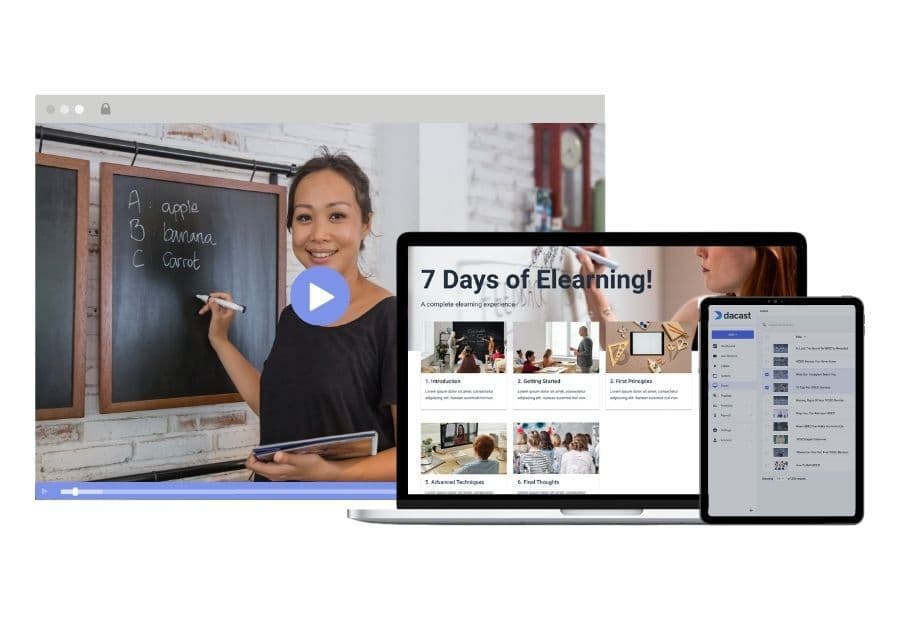The Benefits of Live Video Streaming for Education and Training
In today's rapidly evolving digital landscape, **live video streaming** has emerged as a powerful tool for education and training. With the ability to reach a global audience in real-time, this technology offers a range of benefits that enhance learning experiences and provide flexible, accessible, and engaging opportunities for learners and educators alike. This article delves into the various advantages of live video streaming and how it is transforming the educational and training sectors.
1. Introduction to Live Video Streaming
**Live video streaming** refers to the transmission of live video content over the internet, enabling viewers to watch events and sessions as they happen. Unlike pre-recorded videos, live streaming offers a sense of immediacy and interaction, making it a highly effective medium for education and training.
2. Enhanced Accessibility and Convenience
One of the most significant benefits of live video streaming is its ability to **enhance accessibility**. Learners from different geographical locations can access educational content without the need for travel. This convenience allows for a more inclusive learning environment, where anyone with an internet connection can participate in live sessions, breaking down geographical and socio-economic barriers.
3. Real-Time Interaction and Engagement
**Engagement** is a critical component of effective learning. Live video streaming facilitates real-time interaction between educators and learners, fostering a more dynamic and interactive learning experience. Features such as live chat, Q&A sessions, and polls enable immediate feedback and participation, which can enhance understanding and retention of the material.
4. Flexibility in Learning
Live video streaming offers unparalleled **flexibility** in education and training. Learners can access live sessions from anywhere and at any time, making it easier to fit learning into busy schedules. Additionally, many live streaming platforms offer the option to record sessions, allowing learners to revisit the material at their convenience.
5. Cost-Effectiveness
For educational institutions and organizations, live video streaming can be a **cost-effective** solution. It reduces the need for physical infrastructure, such as classrooms and training centers, and minimizes travel expenses for both educators and learners. This cost-efficiency can make high-quality education and training more accessible to a broader audience.
6. Increased Reach and Scalability
With live video streaming, educators and trainers can **reach a larger audience**. Traditional classroom settings are limited by physical space, but live streaming can accommodate thousands of viewers simultaneously. This scalability makes it possible to offer educational content to a global audience, significantly expanding the reach and impact of educational programs.

7. Improved Collaboration and Networking
Live video streaming fosters **collaboration and networking** among learners and educators. Interactive features such as breakout rooms, collaborative whiteboards, and group discussions facilitate networking and the exchange of ideas. This collaborative environment can lead to richer learning experiences and the development of professional networks.
8. Enhanced Learning Experience with Multimedia Integration
**Multimedia integration** is another advantage of live video streaming. Educators can incorporate various multimedia elements, such as slides, videos, and interactive graphics, into their live sessions. This combination of different media types can make learning more engaging and cater to different learning styles, enhancing the overall educational experience.
9. Real-Time Analytics and Feedback
Live video streaming platforms often come with built-in **analytics tools** that provide real-time data on viewer engagement and participation. Educators can use this data to gauge the effectiveness of their sessions and make necessary adjustments in real-time. This immediate feedback loop helps in continually improving the quality of education and training.
10. Building a Sense of Community
Live video streaming can help build a **sense of community** among learners. The shared experience of participating in live sessions fosters a sense of belonging and connection. Community-building activities, such as group projects and discussions, can be seamlessly integrated into live streaming sessions, enhancing the social aspect of learning.
11. Overcoming Language Barriers
Live video streaming platforms often support **multi-language features**, including real-time translation and subtitles. These features help overcome language barriers, making educational content accessible to non-native speakers. This inclusivity ensures that a diverse range of learners can benefit from the content being delivered.
12. Supporting Lifelong Learning
The flexibility and accessibility of live video streaming make it an ideal tool for **lifelong learning**. Individuals can continue to acquire new skills and knowledge throughout their lives, without being constrained by time or location. This ongoing access to education supports personal and professional growth, fostering a culture of continuous improvement.
13. Enhancing Professional Development
For professionals, live video streaming offers opportunities for **professional development**. Organizations can deliver training sessions, webinars, and workshops to employees, ensuring they stay up-to-date with industry trends and best practices. This continuous learning environment helps professionals remain competitive in their fields.
14. Customizable Learning Paths
Live video streaming allows for the creation of **customizable learning paths**. Educators can design tailored courses that meet the specific needs of individual learners or groups. This personalized approach can enhance learning outcomes by addressing the unique preferences and goals of each learner.
15. Environmental Benefits
The adoption of live video streaming for education and training also has **environmental benefits**. By reducing the need for physical travel and infrastructure, it contributes to lower carbon emissions and a smaller environmental footprint. This eco-friendly approach aligns with the growing emphasis on sustainability in education.
In conclusion, live video streaming is revolutionizing the education and training sectors by offering enhanced accessibility, real-time interaction, flexibility, and cost-effectiveness. Its ability to reach a global audience, foster collaboration, and integrate multimedia elements makes it a powerful tool for modern education. As technology continues to advance, live video streaming will play an increasingly vital role in shaping the future of learning, providing opportunities for continuous improvement and lifelong learning.
By embracing live video streaming, educators and organizations can create engaging, inclusive, and dynamic learning environments that cater to the diverse needs of learners worldwide. The benefits are clear, and the potential for innovation in education and training is limitless.






